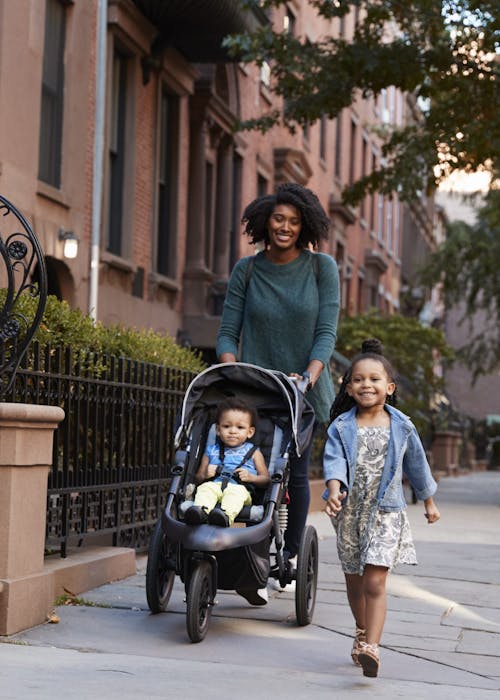

Promoting Well-being for Our Youngest New Yorkers
Insights
December 15, 2015
Across the country, there’s a growing dialogue about the importance of focusing on the needs of young children under age five in order to improve immediate and long-term health and development outcomes. On December 8th, CCC hosted a policy briefing on Promoting Well-being for Our Youngest New Yorkers to engage New Yorkers in a conversation around the needs of the city’s youngest children, as well as important steps underway to address these needs and support healthy child development and family well-being.
“There are over 560,000 children under age five in New York City, and more than half of them are living in poverty,” said CCC’s Executive Director Jennifer March. “We know from research that children’s experiences during infancy and the toddler years are important for brain development, and in the development of essential social and emotional skills. We also know that the presence of chronic stress and trauma can disrupt a child’s healthy development and have a lasting negative impact on a child’s educational and economic outcomes. Therefore it is critical that we pay special attention to the conditions surrounding young children and develop specific strategies to support them and their families.
View the infographic from our policy briefing!
CCC was joined for this conversation by Dr. George L. Askew, Deputy Commissioner for Family and Child Health at the New York City Department of Health and Mental Hygiene (DOHMH).
“Our Littlest New Yorkers are our city’s most precious resource,” said Dr. Askew. “We need to continue our work of changing the culture of how we understand, support and invest in children 0-3 so that they can thrive in nurturing and supportive families and communities.”
Dr. Askew also stated at this event that “using data to inform our work is critical. But we must not forget that behind these numbers are individual children, each with a unique story. It is for all these children that we need to come together and do all that we can to help them achieve their health and development potential.”
The discussion was grounded in CCC’s Keeping Track data, which helped to illustrate opportunities for New York City to build on the progress that has been made in recent years to combat disparities and improve outcomes. For example, the data highlighted that:
- Over 96% of children have health insurance coverage in this city, but there are still some communities where our progress in this area falls behind. For example, in 2014 the community of Flushing in Queens had the highest percentage of uninsured children under age 18 at 7.5% compared to 3.4% of children citywide.
- The proportion of pregnant women receiving late or no prenatal care has declined significantly over time from 19.1% in 1983 to 7.4% in 2013. However there has been an upswing in the past decade, and we continue to see far too many black and Latina mothers receiving late or no prenatal care.
- New York City’s infant mortality rate has been cut in half in the last two decades from 10.2 infant deaths per every 1,000 live births in 1983 to 4.6 in 2013. Despite this progress, a black baby is more than twice as likely to die before his or her first birthday than a white baby.
- The citywide teen birth rate for girls ages 15 to 19 has also declined over time from 33.7 births per 1,000 teens girls in 2006 to 21.2 in 2013. Yet, we continue to see significant racial/ethnic disparities, with much higher rates among black and Latina teens than among white and Asian teens.
- The rate of Early Intervention engagement has remained steady with approximately 30,000 referrals each year from 2012 to 2014. However, white and Latino children account for over 70% of the children referred to Early Intervention services while Asian and black children represent only 25% of the children referred to these services.
- In the area of early childhood education, the City’s PreK for All program is estimated to reach over 65,000 four year old children this school year and its subsidized child care system reaches close to 70,000 children from birth to four years of age. Yet, we continue to see unmet needs for infants and toddlers in particular, with 130,000 income eligible infants and toddlers unserved by the City’s subsidized child care system.
View CCC’s entire policy briefing presentation
“The data provides a clear picture of areas where we’ve begun to turn poor outcomes around,” said Jennifer March. “These changes did not happen overnight, but took a collective effort to champion the need for specific interventions and supports. Thankfully there is also a large and growing body of research and history of effective interventions here in New York City to guide how we might move forward in our efforts to support healthy child development and family well-being.”
Coming out of this policy briefing, CCC will continue to monitor efforts in New York City to reduce infant mortality rates and teen pregnancy rates, and increase access to home visiting and early intervention services, as well as to track progress on new initiatives to combat post-partum depression and strengthen the social-emotional development of young children. We will also continue to weigh in on City budget and policy conversations and advance solutions that ensure that children and families have access to and benefit from a wide range of early supports.
We ask that you continue to follow us on Facebook and Twitter and join our e-action network to stay up-to-date on the latest information and opportunities to take action on behalf of our youngest New Yorkers.


